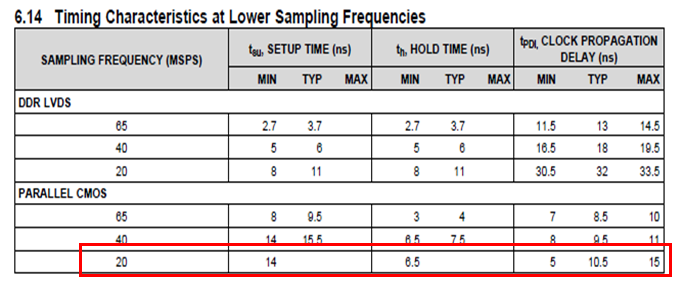Hello,
I have a question about ADS5562.
<Customer Use Case>
- Sampling frequency: 12.5MHz
- LOW SPEED mode (Tying the SCLK pin to high)
- CMOS mode
[Q1]
Their CLKOUT (5pin) duty cycle is not 50%.
Their measurement result is about 78%.
Why is this?
Are there any possible causes for the above?
- D/S, p15, 6.11 Timing Characteristics for LVDS and CMOS Modes
PARALLEL CMOS MODE: CMOS output clock duty cycle= 50%
<My thoughts>
The measurement conditions for the following data are Default Speed Mode.
I think that it may not apply when used in Low Speed Mode.
The important thing about CLKout is not the duty cycle but the rising edge.
Therefore, I don't think I need to worry about the Duty Cycle not being 50%.
[Q2]
I asked them to investigate the waveforms to see if they met the following conditions:
- D/S, p16, 6.14 Timing Characteristics at Lower Sampling Frequencies
- D/S, p18, Figure 5. CMOS Mode Timing
As a result,
tPDI = about 70ns.
tsu = about 25ns
th = about 55ns
This result does not seem to meet the requirements.
Why is this?
Are there any possible causes for the above?
Also, I think that even if the Output Clock Position is adjusted using the SEN Control Pin, the request cannot be satisfied.
What should I do?
Best Regards,
Kaede Kudo


